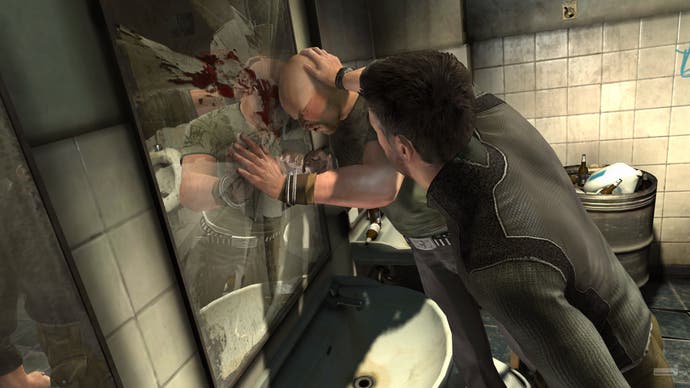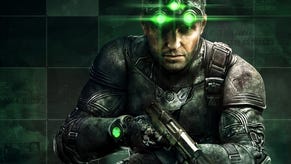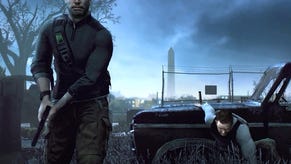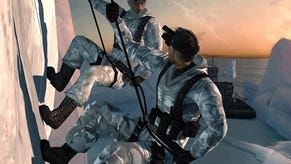Splinter Cell: Conviction
Courage?
During the tutorial stage, Ubisoft casts Fisher back into a seemingly mundane flashback: a conversation with his daughter encouraging her not to be afraid of the dark since, when one is in the dark, others should be afraid of us. Then, zipped back to the marketplace, creeping death along straightforward corridors of interaction, the new panther-like Fisher demonstrates his argument. He's lithe and deadly in the dark, a character comfortable in his polygons.
This inventiveness is also found in the basic systems, although with mixed success. Fisher's new mark and execute auto-kill feature, a cross between Rainbow 6's target mark-up and Fallout 3's VATS, allows you to light up multiple targets and then, at the squeeze of a trigger, automatically execute them in bullet time. At the start of the game, where set-pieces are arranged to teach the mechanic, it appears intuitive.
However, as you can only execute a mark attack after performing a stealth melee kill (one time per kill), it's often a better idea in principle than in practice. Once levels begin to open up, it never quite feels natural to go out of your way to melee kill a target simply to earn the right to use the auto-kill feature at a later stage. More often, you rely on silenced weapons and various grenade types, Fisher deadly enough to tackle most situations without the need for the feature.
Soon after the first few missions, the game's schizophrenia reveals itself, as in a playable flashback you find yourself wearing Marine's khakis in a sunlit Iraq, fighting amongst the rubble of a bombed town. Stealth is possible here, but without the cover of darkness, the game devolves too quickly into sub-Modern Warfare firefights, each side taking potshots at the other from around low-level cover.
Later in the game, whenever cover is blown amongst a large group of adversaries, you are supposed to seek cover in new pockets of darkness, flanking enemies as they line up shots on your last known position (represented as a ghostly silhouette). But here the scrappy open play is at odds with the more considered approach when you're undetected, leaving both you and your opponents racing around in an incongruous game of kiss-chase.

That may be somewhat realistic, but too often it feels as though your punishment for being spotted is that Splinter Cell: Conviction becomes a far worse game. By the end of the short single-player campaign, the heavy emphasis on unavoidable shoot-outs ensures that its best moments were experienced hours earlier.
The stylish, foreboding stealth set-up is also heavily undermined by some of the most intrusive and inappropriate enemy voice acting in recent memory. "You're not the only badass on this airfield", screams one soldier as he angrily swipes a flashlight around in search of you. "Come on LITTLE GIRL. Show your ass," barks another. The dialogue is bad, but it's the performances that truly grate. While Fisher, played by Michael Ironside, is gruff and understated, his opponents are Batman-villain caricatures, their interminable screaming destroying all sense of tension and tautness to the atmosphere.
The game's only economy comes in the form of P.E.C. points, which are used to upgrade Fisher's weaponry, increasing their accuracy and power. Points are won by completing P.E.C. challenges, in-game achievements that work in a similar way to Modern Warfare 2's multiplayer challenges. P.E.C. Challenges are divided into three categories and involve taking out an enemy in a specific way without being spotted, performing specific feats after being spotted, or more general in-game achievements, such as completing a level without being spotted or retrying.












